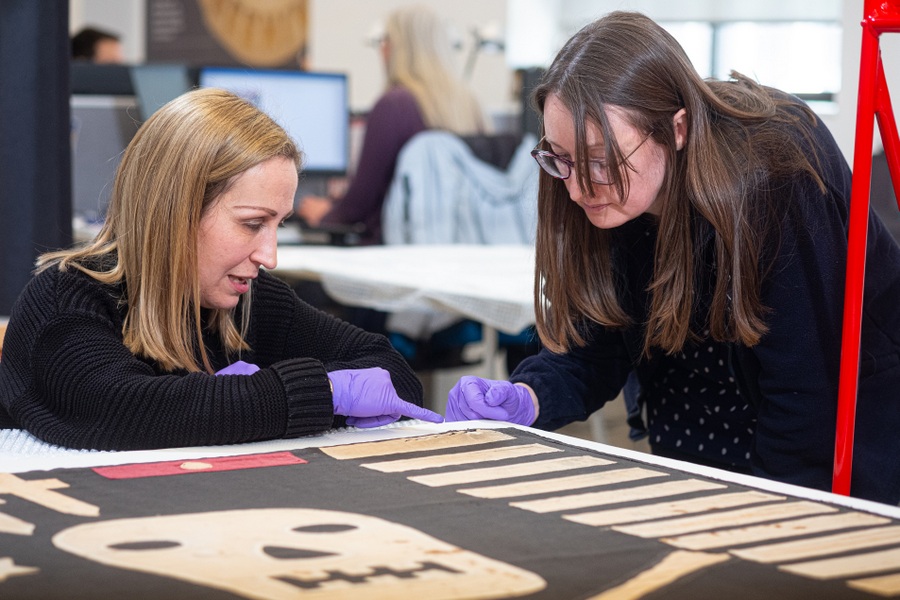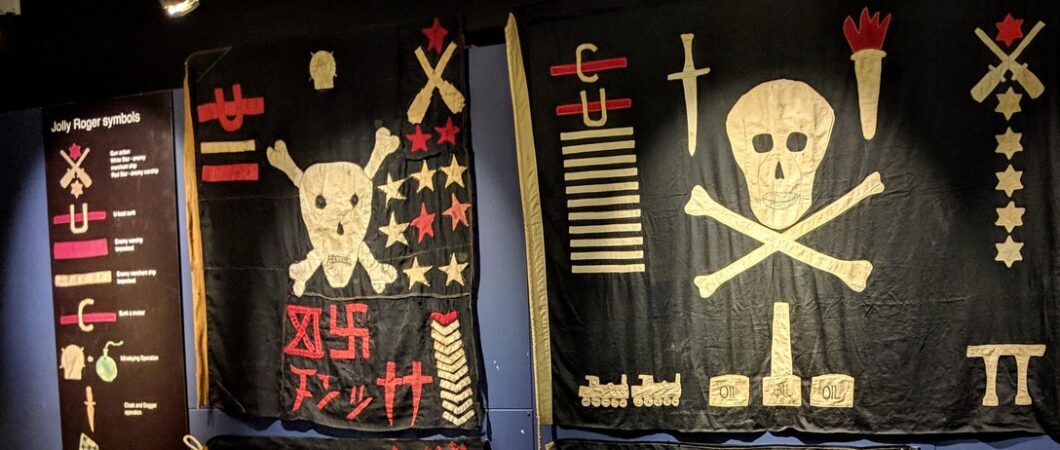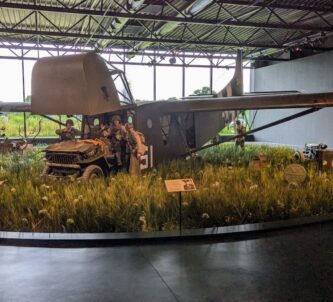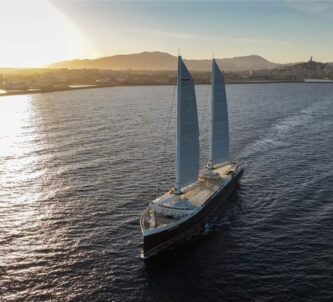A new display of ‘Jolly Roger’ flags flown by Royal Navy submarines is launched today (27/03/2024) at The Royal Navy Submarine Museum, Gosport. It will expand the museum’s previous collection of Jolly Rogers by including the earliest known surviving example and the museum’s newest acquisition, a Jolly Roger from HMS Thorough.
The Jolly Roger is generally thought of as a pirate flag, but Royal Navy submarines have been flying the flag for over 100 years in both defiance and in solidarity with colleagues in the Silent Service. The tradition started in September 1914 as Lieutenant Commander Max Horton*, the captain of HMS E9, flew the flag as his submarine returned to Harwich after sinking the German light cruiser SMS Hela. This was Horton’s defiant response to comments of Admiral Sir Arthur Wilson who likened submariners to pirates.
“Submarines are underhanded, unfair and damned unEnglish… treat all submarines as pirates in wartime… and hang all their crews.” – Admiral of the Fleet, Sir Arthur Wilson, 1901
Although the navy disapproved the practise, the idea caught on. So whilst 17th century pirates had raised their flags to frighten ships, submarine crews would first create and then hoist theirs on return to base to show pride in their successes during a wartime patrol. Thus each flag became a unique visual record of the history of the boat.
The practise carried on in the Second World War (by which time the Royal Navy was officially issuing submarines with materials for flag-making), and the museum’s latest acquisition is from HMS Thorough, a T-class submarine that served in the Far East from March 1944 to the end of the war in September 1945. She had a successful career, sinking twenty seven Japanese sailing vessels, seven coasters, and several small ships. Victories like this would be itemised on the flag with symbols.

Alexandra Geary, Curator (Artefacts) from the National Museum of the Royal Navy explains:
“Each action a submarine carried out had its own symbol. These symbols would either be painted or sewn onto a bit of black material. A dagger, for example, would denote a secret mission; a bar signifies the sinking of an enemy merchant ship; a lighthouse that the boat was used as a navigation beacon and we even have a symbol of Popeye character “Eugene the Jeep” as a nod to the popular utility vehicle.”
Visitors can create their own Jolly Rogers with a specially-created interactive that allows flags to be projected onto an adjoining wall.
The origins of the ‘Jolly Roger’ and its skull & crossbones motif, are shrouded in myth and mystery. The name “Jolly Roger” is thought to come from the French phrase “joli rouge” which means “pretty red”. The original pirate flags were blood red rather than black and white and this signalled that no mercy would be given once the pirates boarded and battle ensued. The museum suggests the skull and crossbones came from the symbol used in ships’ logs, where it represented death onboard, but others suggest it was an identity mark for privateers or a religious icon for Byzantine raiders.
Whatever its origins, Royal Navy submarines have continued the tradition; HMS Conqueror flew a Jolly Roger on her return from the Falklands Conflict in 1982 and HMS Otus flew their flag after returning from the Gulf War in 1991.

The Royal Navy Submarine Museum is part of the National Museum of the Royal Navy (NMRN). The NMRN has several museum ships and sites in Portsmouth and Gosport and they share the Portsmouth Historic Dockyard with the Mary Rose.
Other Portsmouth Posts
| Portsmouth Historic Dockyard | HMS Victory & Nelson | HMS M33 |
| Mary Rose | Submarine Museum | Explosion! |
| HMS Warrior | D-Day Story | Visiting Portsmouth |
Visitors can get an Ultimate Explorer ticket to Portsmouth Historic Dockyard which gives 12-month entry to all the attractions at Portsmouth Historic Dockyard including The Mary Rose, HMS Victory, HMS Warrior, HMS M.33, the galleries and exhibitions of the National Museum of the Royal Navy, the Royal Navy Submarine Museum, Gosport, Explosion Museum of Naval Firepower, Gosport and a Harbour Tour.
* Max Horton went on to serve in WW2 as commander-in-chief of the Western Approaches, responsible for the British role in the Battle of the Atlantic against the U-boats.







